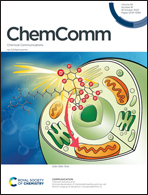Recent advances in zinc ferrite (ZnFe2O4) based nanostructures for magnetic hyperthermia applications
Abstract
Spinel ferrite-based magnetic nanomaterials have been investigated for numerous biomedical applications, including targeted drug delivery, magnetic hyperthermia therapy (MHT), magnetic resonance imaging (MRI), and biosensors, among others. Recent studies have found that zinc ferrite-based nanomaterials are favorable candidates for cancer theranostics, particularly for magnetic hyperthermia applications. Zinc ferrite exhibits excellent biocompatibility, minimal toxicity, and more importantly, exciting magnetic properties. In addition, these materials demonstrate a Curie temperature much lower than other transition metal ferrites. By regulating synthesis protocols and/or introducing suitable dopants, the Curie temperature of zinc ferrite-based nanosystems can be tailored to the MHT therapeutic window, i.e., 43–46 °C, a range which is highly beneficial for clinical hyperthermia applications. Furthermore, zinc ferrite-based nanostructures have been extensively used in successful pre-clinical trials on mice models focusing on the synergistic killing of cancer cells involving magnetic hyperthermia and chemotherapy. This review provides a systematic and comprehensive understanding of the recent developments of zinc ferrite-based nanomaterials, including doped particles, shape-modified structures, and composites for magnetic hyperthermia applications. In addition, future research prospects involving pure ZnFe2O4 and its derivative nanostructures have also been proposed.



 Please wait while we load your content...
Please wait while we load your content...